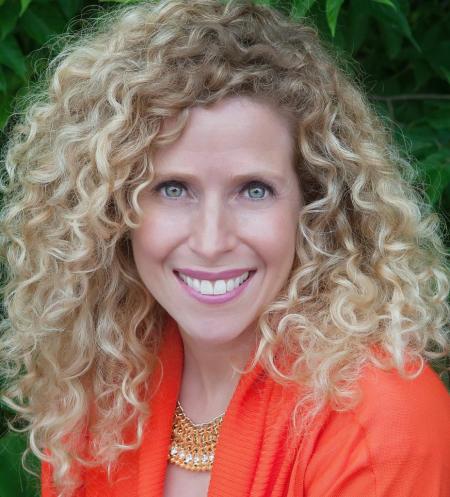
It’s that seminal time of year when important decisions are made regarding the purchase and provision of gifts to boys and girls across the land. And they wait, no doubt, with bated breath.
But who – or what – is the final arbiter of who’s been naughty and who’s been nice?
By most accounts it’s the inimitable Santa Claus, apparently with a bit of help from some snooping elves. The message? Better be on your best behavior lest an elf, or perhaps the big man himself, catches you offguard.
If Billy or Suzy is looking for the metrics of judgment, they are not hard to find – just turn on the radio (or a smartphone?).
No crying. No pouting. And lots of sleeping.
It is, really, quite straightforward. And, after all, Santa’s making a list, checking it twice and, “with little tin horns and little toy drums, rooty toot toots and rummy tum tums,” he’s coming to town with his list of winners and losers.
To wit, being on one’s best behavior (or doing the right thing) even when you think no one is watching is a good benchmark for our children. And chief among those behaviors may be two universal attributes that matter most: empathy and kindness. Related in context – and through action – each is a “teachable” trait and, here, the role of parents (and other caring adults) cannot be overstated.
In her article “Teaching Empathy: Evidence-Based Tips for Fostering Empathy in Children,” Gwen Dewar, Ph.D., founder and author of ParentingScience.com, says that empathy is not a talent per se. Rather, it’s a complicated “phenomenon” made up of ascending skills: being self-aware and able to separate one’s own feelings from those of others; appreciating someone else’s point of view; and regulating one’s own emotions and actions.
That last point speaks to the developmental dance that leads youth from an external locus of control to an internal one, where their voices are the determining factors in behavioral response.
While Dewar concedes that this skill set may appear to be a “standard issue, grown-up” one, even adults – let alone youngsters – can struggle in acquiring it. She also argues that it’s not an either-or proposition, not a case of having or lacking empathy. There are degrees of empathy, and they can be enhanced with help.
Perhaps as a Christmas gift of her own, Dewar offers some tips to consider when working with children on becoming empathic individuals.
• Pay attention to your children’s own emotional needs and teach them to be resilient in the face of adversity. Science shows that young people who feel emotionally and physically supported fare better than those who don’t – just check out Abraham Maslow’s “Hierarchy of Needs.”
• Recognize that children are individuals with their own minds and ways of thinking (Dewar calls this being “mind-minded”), taking time to talk with them about that inner world and how it shapes behavior.
• Role model empathy by highlighting people in divergent situations and discussing how they may be feeling. These can be individuals your child knows or learns about on television or in movies and music.
• Point out commonalities between people, “humanizing” those in despair or distress.
• Educate your children about how certain emotional states, such as feeling angry or sad, may affect their view on any given issue – as well as their interactions with others.
• Speak to older children about “moral disengagement” – when powerful influencers can lead them to do what they know to be incorrect, inappropriate or unacceptable – and share strategies on how best to remove themselves from the situation.
• Demonstrate both verbal and physical affection. Such gestures make children feel valued and loved, which in turn releases naturally produced oxytocin (also known as “the cuddle hormone”), which then engenders a boost in emotional intelligence.
Empathy breeds kindness, or at least it should.
A critical question for parents is posed by the Washington Post story “Are You Raising Nice Kids?” That piece shares the work of psychologist Richard Weissbourd of Harvard University’s “Making Caring Common.” The project helps parents and others to raise children who are caring and committed to their communities and to justice, sourcing data that indicate a significant majority of young people believe their parents are more concerned with their personal achievement or happiness than whether or not they are caring toward others. Further, it advises that parents make caring a priority for their children, counseling, “Instead of saying to your kids: ‘The most important thing is that you’re happy,’ say ‘The most important thing is that you’re kind.’”
So, how do we teach kindness?
Kristine Breese has some ideas she enumerates in her Parents magazine article “14 Little Ways to Encourage Kindness.” Here are some of the most useful.
1. Make helping others a family activity.
2. Require that your children do regular chores … “just because” they’re part of a family and because it is the right thing to do (there’s that admonition again!).
3. Demonstrate positivity toward their helping, even if they are not perfect or quick.
4. Practice acts of kindness that your kids can learn from.
5. Teach children to wear “rose-colored” glasses (or perhaps to drink from glasses that are “half-full”).
6. Encourage children to see that taking care of our earth is important.
7. Request that kids regularly look for ways to help others, even with simple tasks.
8. Impart the importance of empathy (see, they are related) and note what’s going on in the lives of others.
9. Ask kids to go out of their way to assist neighbors, especially in times of crisis.
10. Expect youth to “mind their Ps and Qs.”
Adding to the mix, Marilyn Price-Mitchell, Ph.D., founder of Roots of Action and author of “Tomorrow’s Change Makers: Reclaiming the Power of Citizenship for a New Generation,” recalls the simple but powerful message of Martin Richard, an eight-year-old victim of the Boston Marathon bombings in 2014, who (now) famously created a poster reading, “No More Hurting People – Peace.”
With those words, Price-Mitchell asks, “How do we increase the happiness and well-being of every child?” Her answer? “We start by teaching children to care about others every day throughout the year” (which in turn, of course, makes them feel better about themselves).
Being nice every day, indeed. Maybe especially Christmas Day.



























